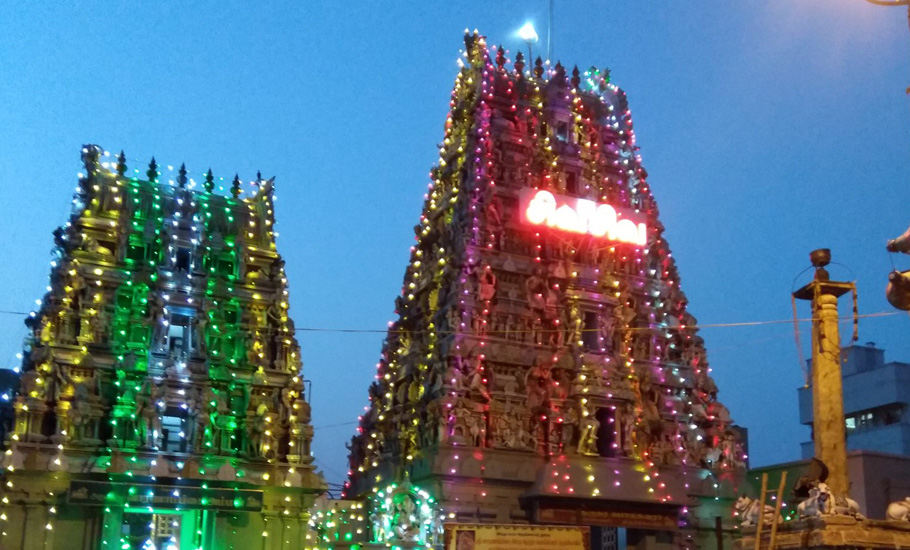
- Home
- India
- World
- Premium
- THE FEDERAL SPECIAL
- Analysis
- States
- Perspective
- Videos
- Sports
- Education
- Entertainment
- Elections
- Features
- Health
- Business
- Series
- In memoriam: Sheikh Mujibur Rahman
- Bishnoi's Men
- NEET TANGLE
- Economy Series
- Earth Day
- Kashmir’s Frozen Turbulence
- India@75
- The legend of Ramjanmabhoomi
- Liberalisation@30
- How to tame a dragon
- Celebrating biodiversity
- Farm Matters
- 50 days of solitude
- Bringing Migrants Home
- Budget 2020
- Jharkhand Votes
- The Federal Investigates
- The Federal Impact
- Vanishing Sand
- Gandhi @ 150
- Andhra Today
- Field report
- Operation Gulmarg
- Pandemic @1 Mn in India
- The Federal Year-End
- The Zero Year
- Science
- Brand studio
- Newsletter
- Elections 2024
- Events
- Home
- IndiaIndia
- World
- Analysis
- StatesStates
- PerspectivePerspective
- VideosVideos
- Sports
- Education
- Entertainment
- ElectionsElections
- Features
- Health
- BusinessBusiness
- Premium
- Loading...
Premium - Events

As Erode turns 150, a walk through the city’s rich heritage
Apart from its violent history of wars, there is a lot to discover about Erode, literally etched in stone.

Ancient Tamil Nadu was made of five different ‘nadus’ (countries) — Chera Nadu, Chola Nadu, Pandiya Nadu, Thondai Nadu and Kongu Nadu. Erode, which came under Kongu Nadu then, is now a part of the Kongu region. Archaeological evidence shows Erode existed even in the Sangam age between 800 BC and 250 AD. As any country back then, Erode too came under attack and was the favourite of...
Ancient Tamil Nadu was made of five different ‘nadus’ (countries) — Chera Nadu, Chola Nadu, Pandiya Nadu, Thondai Nadu and Kongu Nadu. Erode, which came under Kongu Nadu then, is now a part of the Kongu region.
Archaeological evidence shows Erode existed even in the Sangam age between 800 BC and 250 AD.
As any country back then, Erode too came under attack and was the favourite of a number of dynasties such as Erattar Kangar (250 AD-870 AD), Cheras (10th, 12th and 13th century AD), Kongu Cholas (942 AD-1304 AD), Kongu Pandiyas (1265 AD-1320 AD), Hoysalas (1291 AD-1342 AD), Madurai Sultan (1329 AD-1365 AD), Vijayanagaras (1364 AD-1642 AD), Ummattur chieftains (1489 AD-1527 AD), Madurai Nayaks (1629 AD-1708 AD), Mysuru Udayar (1647 AD-1766 AD), Hyder Ali-Tipu Sultan (1761 AD-1799 AD), East India Company (1799 AD-1858 AD) and the British (1858-1947).
Interestingly, from the 3rd century AD to 1804, almost all of the dynasties ruled the region from the capital Dharapuram, which has now been reduced to a town.
“Because of all these warring dynasties, the population of Erode came down to 400 from 3,000 in 1792,” says renowned epigraphist and eminent historian Pulavar Se Rasu, in his seminal work, Therintha Erode, Theriyatha Seithigal.
Apart from its violent history, there is a lot to discover about Erode, literally etched in stone. For instance, Venba — a form of classical Tamil poetry — inscribed on Nadukal or hero stones (hero stones are memorials narrating the death of a hero in battle). The state’s only musical inscription can also be found here.
Moreover, the women from this region are credited with having translated Brihatkatha in Sanskrit into Tamil ‘Perungathai’ (one of the five small epics). It was the first work of translation to Tamil.
With a rich heritage and an equally interesting mix of people and cultures, the Erode City Municipal Corporation was formed on September 16, 1871. For many years now, people here have been demanding the state government to commemorate the day as ‘Erode Day’.
As the city marks its 150th year, we take you on a visual tour of the place and its people that make Erode so culturally vibrant.
